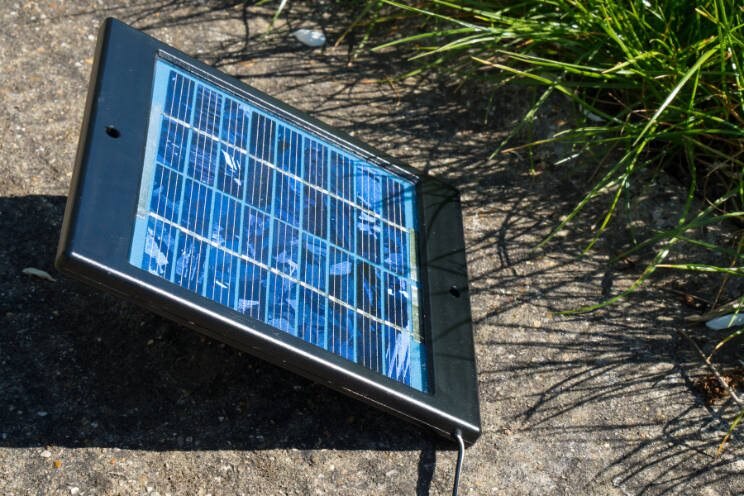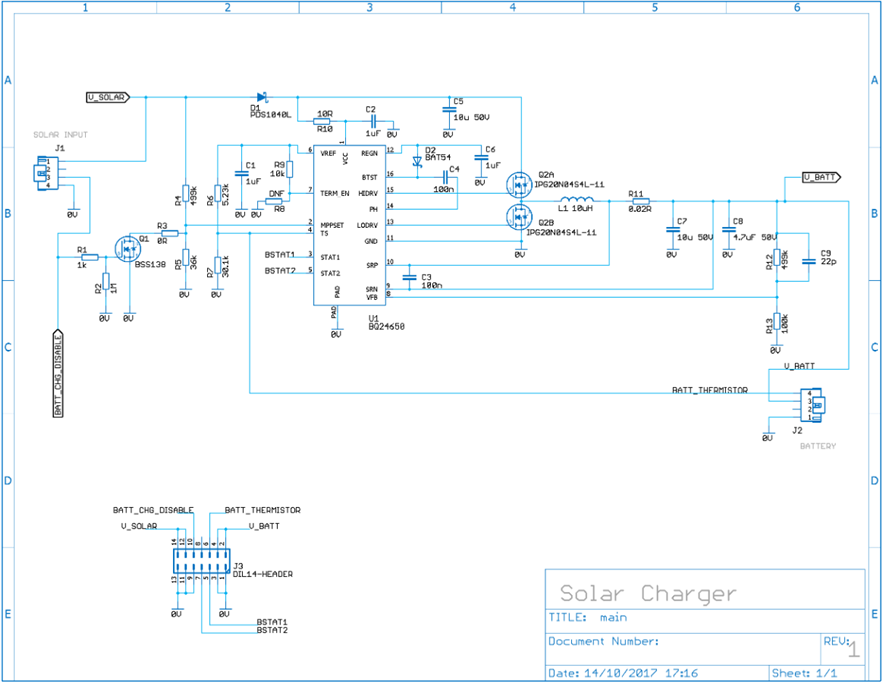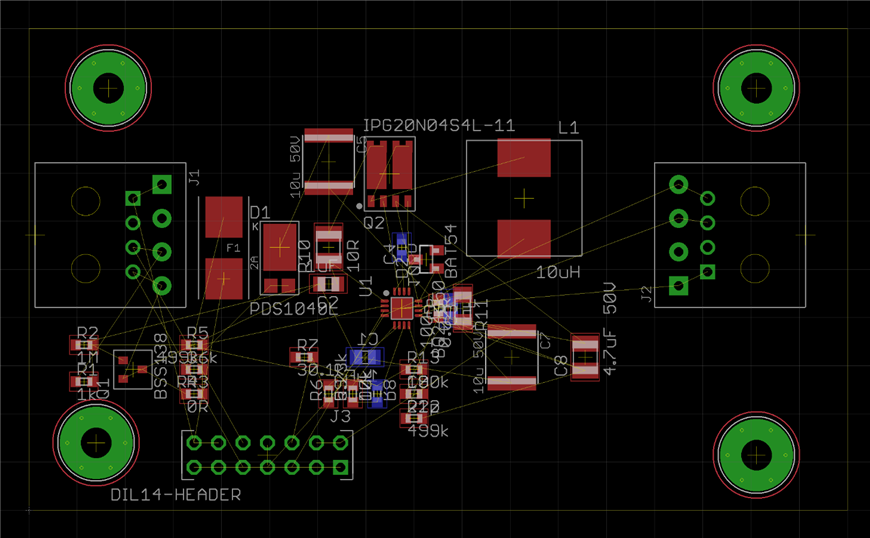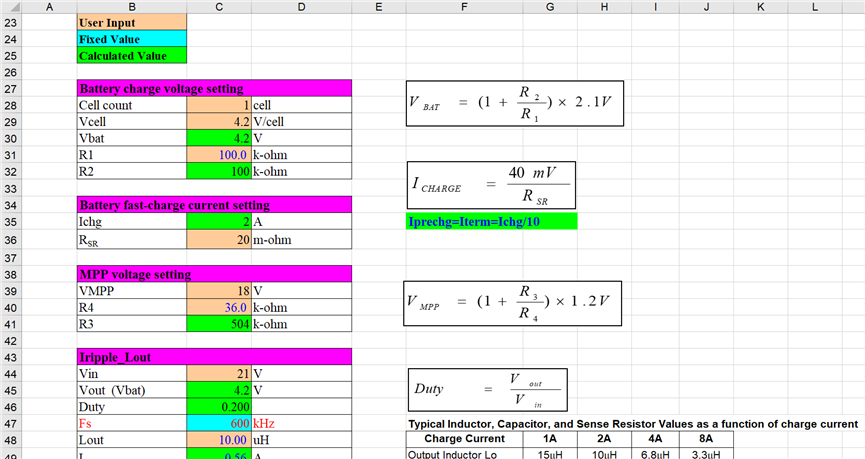 | Monthly project competitions, chances to earn prizes, you decide project themes, your ideas, your projects, turn ideas into projects. | Project14 Home |
| Monthly Themes | ||
| Monthly Theme Poll |
Introduction
There is lots of scope for outdoor electronics. A solar charger is useful for this : ) The 90-second video here describes it.
I wanted to have a general purpose outdoor solar charger that could be used for (say) powering outdoor speakers, or for evening lighting. I wanted something that could easily charge some tens of Watt-hours energy capacity batteries, so that there is lots of power available, but small enough that it doesn’t need a massive panel.
I have several compact solar panels and a few rechargeable batteries to test with for now, but I hope to find slightly larger panels and batteries too.
A charge current of a few amps was the ballpark I was looking for, and the ability to charge a cell or 2- or 3-cell battery, perhaps up to 12V.
It needed to have some flexibility, so that I could try out different panels and batteries. I didn’t want a microcontroller to be mandatory, so I wanted to be able to set the solar panel MPPT (maximum peak power tracking) value using a resistor.
The perfect IC for this seemed to be the BQ24650BQ24650. It can accept a reasonably wide power range for small panels (5V to 28V) and can handle different battery types and different numbers of cells.
Schematic
The circuit is fairly straightforward; it is based on the datasheet, with some external control to be able to switch it on/off using an optional microcontroller. The two main connectors J1 and J2 are used for the solar panel input and the battery to be charged. There is a third connector which carries the same connections plus a few more that are useful for connecting up a microcontroller or LEDs for status information.
PCB Layout
The CAD layout here shows the current state of the board; it still needs to be routed! It will be fairly compact, around 100x50mm.
Circuit Calculations
In order to determine precise component values, there is an excellent BQ24650 spreadsheet. I used it to experiment with what values will be required. These will be selected once a battery is chosen. Initially I may use a couple of D sized NiMH batteries, to build an outdoor lamp or speaker : )
Summary
There is still lots to do (PCB layout, battery selection, component value adjustment) but I’m happy that soon there could be a compact, general-purpose solar charger for small to mid-powered outdoor projects!






Top Comments
-

mcb1
-
Cancel
-
Vote Up
+2
Vote Down
-
-
Sign in to reply
-
More
-
Cancel
-

shabaz
in reply to mcb1
-
Cancel
-
Vote Up
+1
Vote Down
-
-
Sign in to reply
-
More
-
Cancel
-

mcb1
in reply to shabaz
-
Cancel
-
Vote Up
+1
Vote Down
-
-
Sign in to reply
-
More
-
Cancel
-

mcb1
in reply to shabaz
-
Cancel
-
Vote Up
+1
Vote Down
-
-
Sign in to reply
-
More
-
Cancel
Comment-

mcb1
in reply to shabaz
-
Cancel
-
Vote Up
+1
Vote Down
-
-
Sign in to reply
-
More
-
Cancel
Children